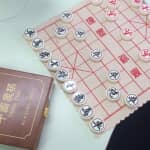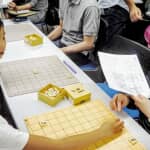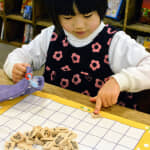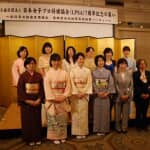Shogi 17 January 2017
Your Bragging! : 5 Trivia around Shogi Equipment–Board and Pieces–
We have introduced our purchasing special Shogi board and pieces, which were used in Meijin Title Match the other day, with the intent of giving children dream. In a related move, I interviewed a craftsman who produces Shogi equipment and then this gave me the urge to learn deeper about Shogi equipment.
I have read a large number of Shogi materials, books, magazines and so on. Bish-bash-bosh! I discovered a lot of interesting episodes.
It would be a waste not to share them. And, I do want to tell our readers them, five trivia about Shogi equipment, my personal “heh”-things on particular.
1. “A Puddle of Blood”: Belly Button on the Back of Shogi Board
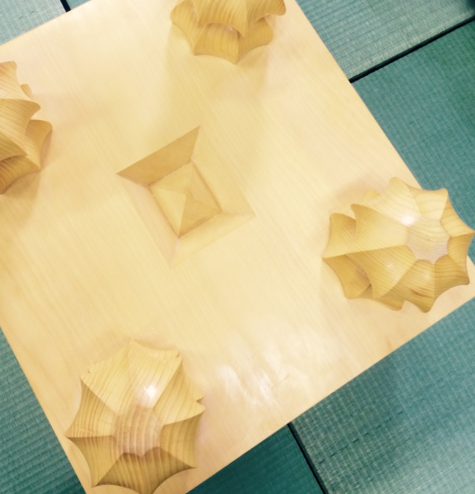
Why is that called so? I tried to see the origin of the name. Then, I found the scary name came from its scary episode.
In the past, any third person who interrupted a Shogi game was decapitated. Then his/her head was gibbeted on the back of Shogi board. Surely, it was overkill, but this episode implies that the players are devoted themselves to a serious game on the board.
2. Gardenia-Flower-Shape of Shogi Board’s Legs Have Also the Episode
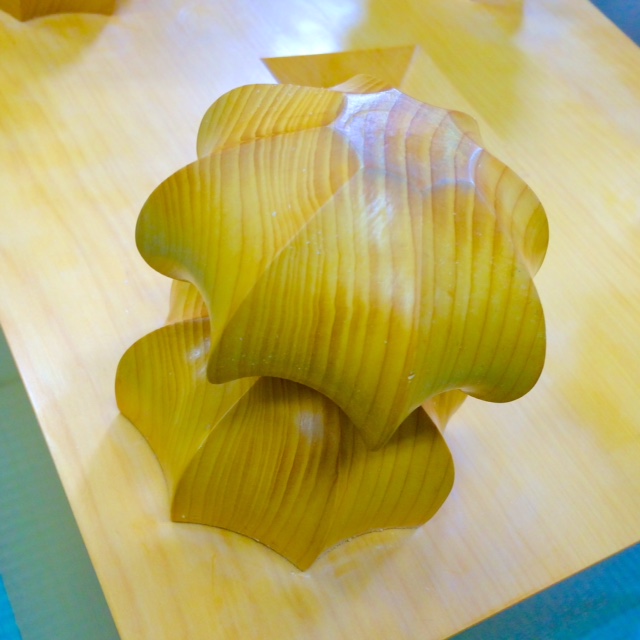
In this blog, we introduced Mr. Tokujiro Kito, who is the owner of Maruhachi-Goban-ten. Kito-san is also a younger brother of the late Mr. Atsuo Kito who made a board and pieces used in Meijin Title Match. Existing board makers scarcely made legs of Shogi boards by hand, Kito- san said.
I never saw the legs with careful observations in the past, but now that I look closer and notice their complicated design. Indeed, it seems that quite high-level technique is needed to produce those legs by hand.
I thought about legs’ shape in the following way;
Since Shogi is one of traditional Japanese culture, the legs of Shogi board are in the motif of Gardenia flower whose place of origin is Japan. However, after checking over, I discovered deeper and more interesting reason for that.
This reason contains also some degree of fear like the one introduced above. The Japanese name of Gardenia flower is “Kuchi-nashi”, which means “no-mouth” and becomes from the fact that it does not crack even it is ripe. Japanese “Kuchi” stands for “Mouth” in English. Japanese “Nashi” refers to “No or Non” in English. Again, no body was allowed to interfere in a Shogi game; nobody had a mouth to say something during the game. Can you get this play on words?
3. Square on a Shogi Board is Rectangular

Looking at a Shogi piece, you may notice it is not perfectly pentagon shaped, but vertically long. Suited for that shape, the shape of a square on the board is oblong. In the notation of shogi game score (what we call Kifu), the position of each square is indicated with the Arabic numerals for vertical axis and Chinese characters for horizontal axis; just for your information, it is written as “2 二金”, “5 六歩” and so on.
I suppose that in Shogi the concepts of the vertical and the horizontal are highly valued. As I mentioned before, the shapes of pieces and a square on a board are both rectangular. It could be said that is not merely coincidence, but something necessary.
Taking account all, it is quite natural to use Shogi board in the correct direction. Shogi does have a strict rule, because it is really one of noble traditional Japanese culture.
4. Ideal Shogi Piece Face
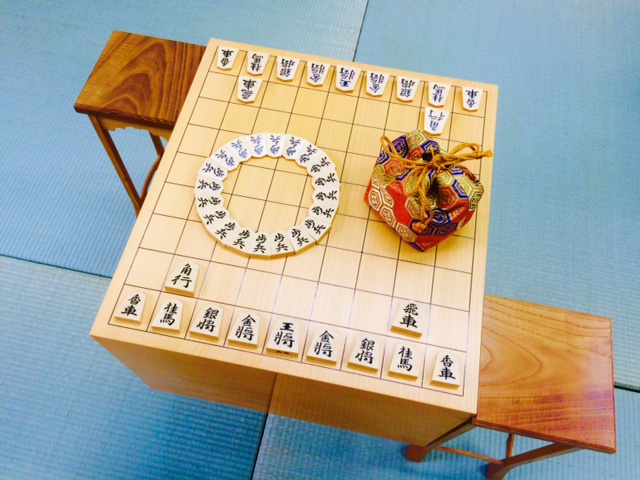
It is said there is a golden proportion for a human face. Similarly, there is a golden proportion for a Shogi piece.
The golden proportion for Shogi piece is determined by each angular of pentagon. Let’s put any Shogi piece on a board correctly. If your piece has the shape with the top at an angle of 144 degrees, the middles at an angle of 117 degrees, and the bottoms of 81 degrees, it means you got ideal pieces.
Those angles have also a good reason.
Interesting thing will happen when you make a circle with any of these ideally shaped 20 pieces. They will form a perfect circle. The higher quality pieces are, the more beautiful circle they will form.
Actually, pieces used in Meijin Title Match beautifully made a perfect circle.
Size of each piece is not large, but an angle in the small piece is accurate to one degree. What amazing technique Japanese craftsmen have!!
5. Materials for Ritzy Pieces are the Unnecessary for Other Products
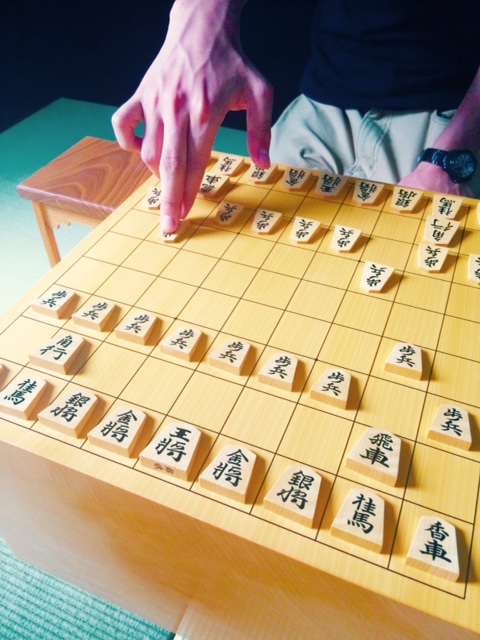
When it comes to the expensive wooden materials for Shogi equipment, it first comes to boxwood, a root part on particular.
The root part is very hard and sometimes with holes, called “Uro”. That is not good to make seals and combs and usually thrown away as an unwanted thing. On the contrary, as materials for Shogi it is appreciated as valuable thing because it occasionally contains stripe patterns like Tiger or spiral pattern like peacock feather. Those complex patterns add unique flavor and extra value to pieces. With the same reason, branched parts are also used for luxury equipment.
Don’t you think it is cool that instead of using easy parts, craftsmen of Shogi piece prefer to challenge to use and appreciate the harder parts. For me as an amateur, wood without root, branched parts, or squiggly patterns look more appropriate for crafting, though.
What do you think of this article around Shogi? Do you feel like talking to anybody?
There is no end of interesting story behind Shogi, I think. If so, Shogi must be fun to play. Why don’t you try to play Shogi, listening the good sound from a puddle of blood, or examining the angle of a piece?
